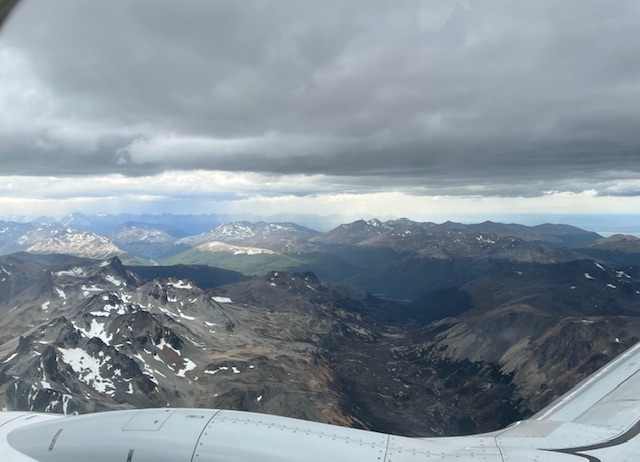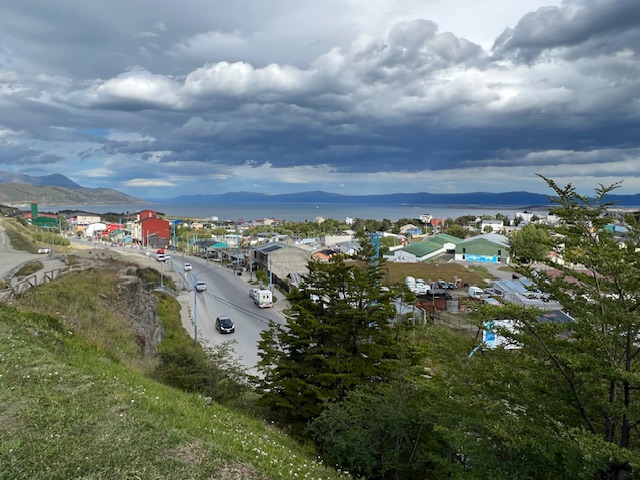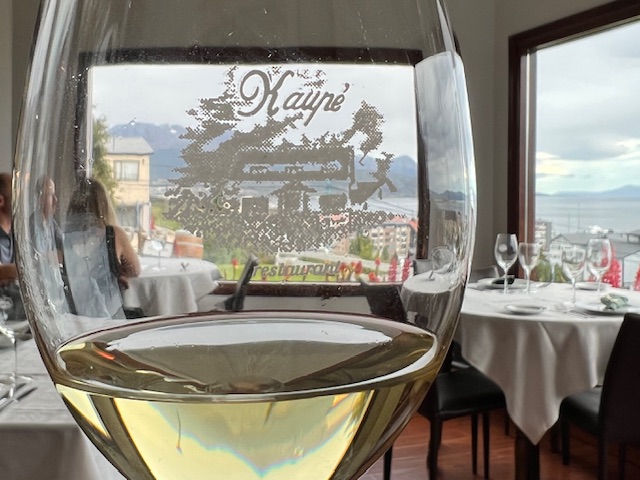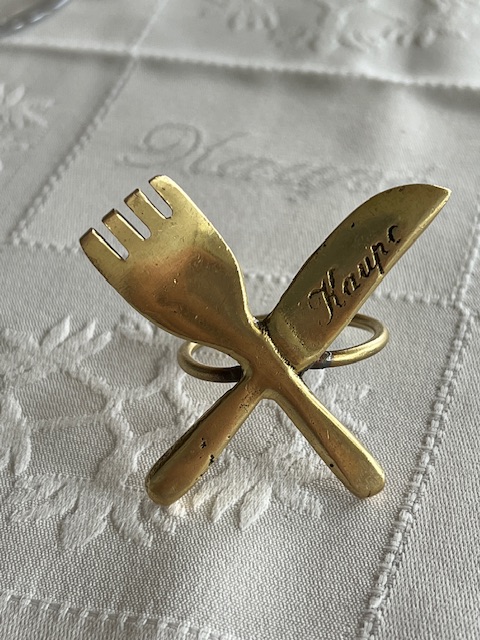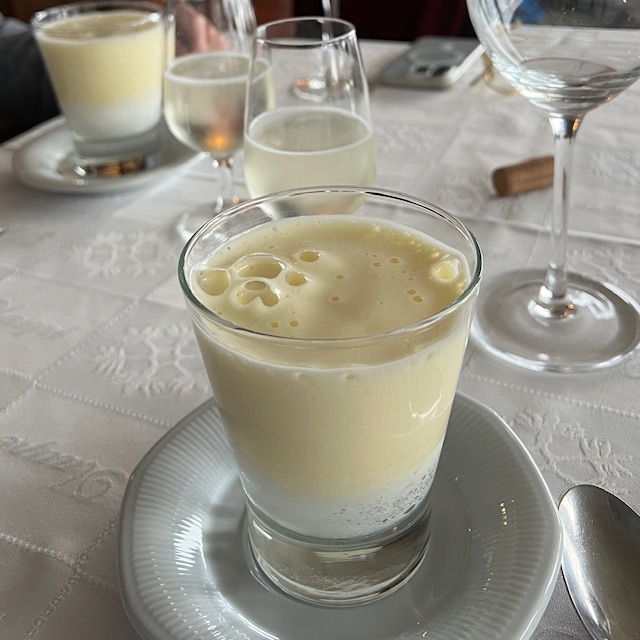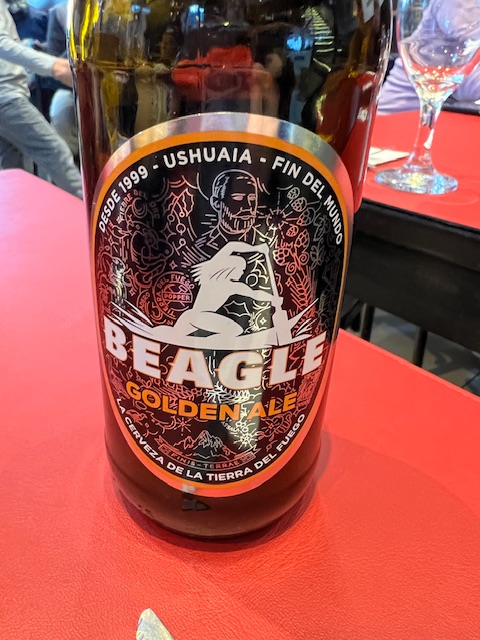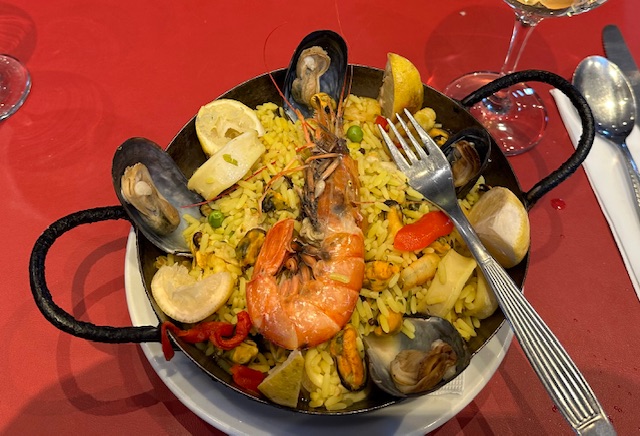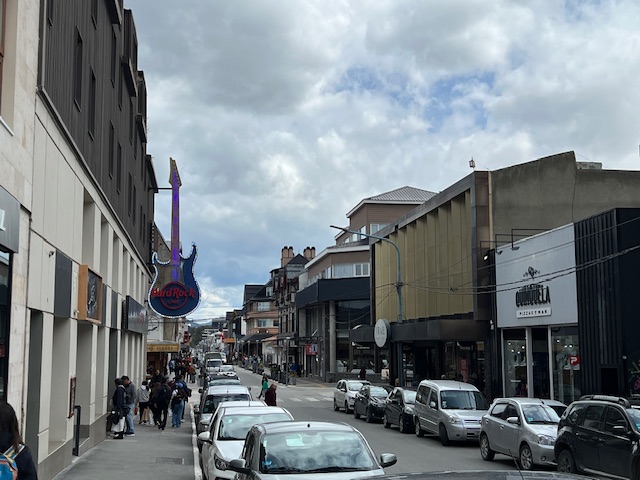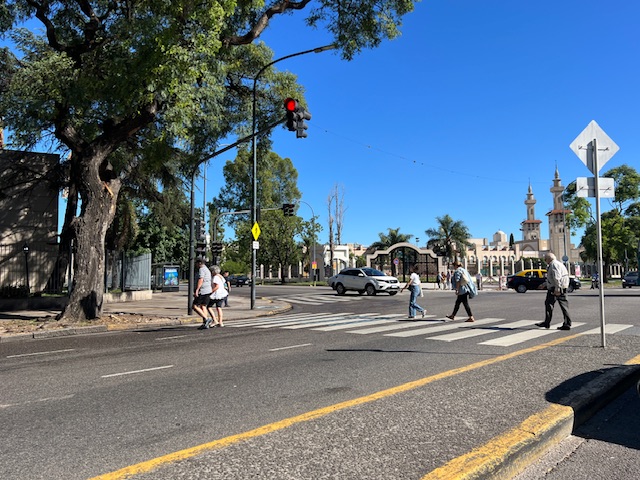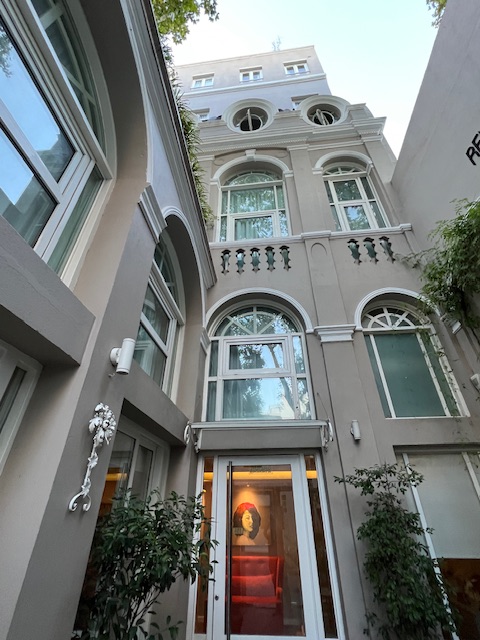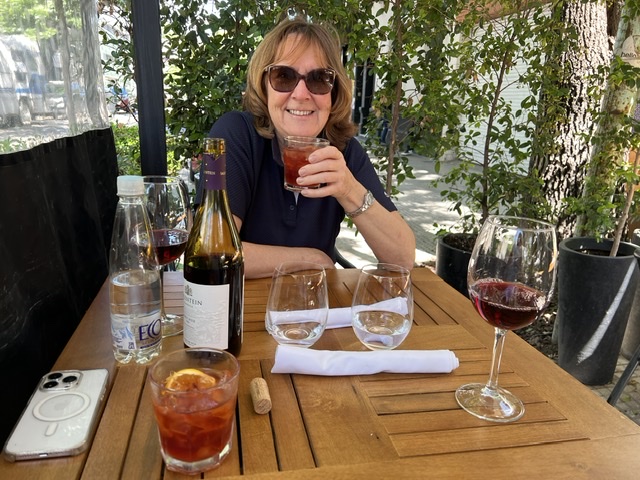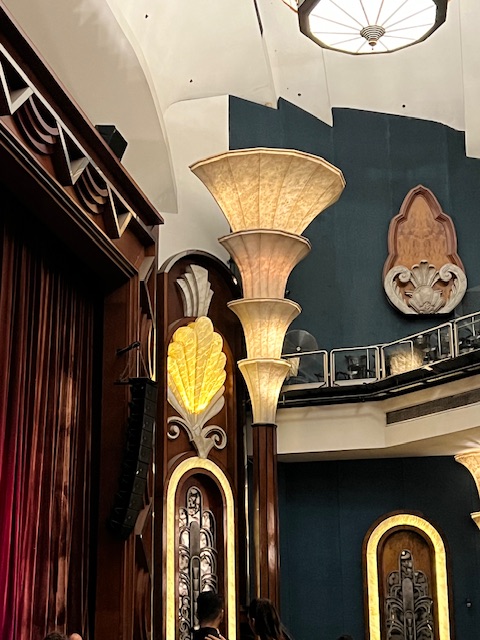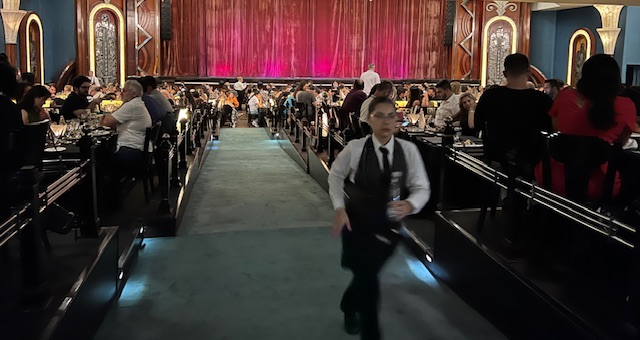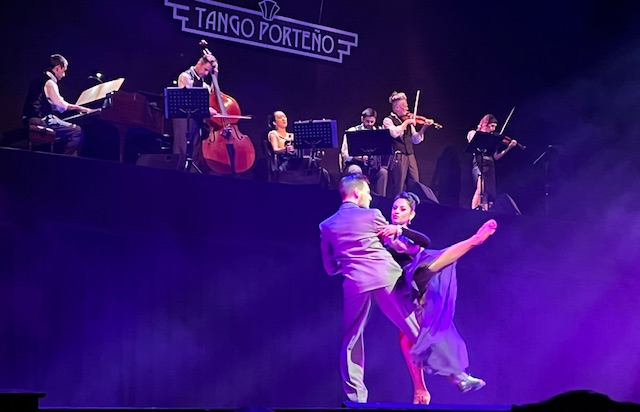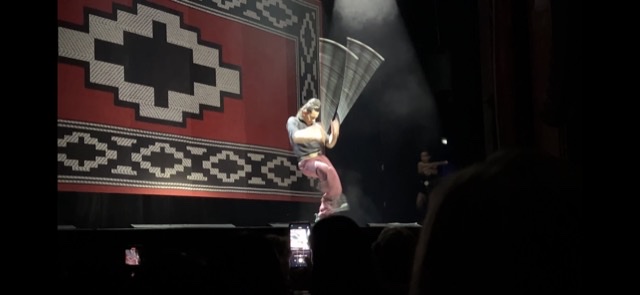Day 1

We board our boat ‘Ventus Australis’ at 18.00. It is comparatively small carrying 200 passengers and is dwarfed by the other two cruise ships that are berthed. We are not really cruise people but it is the only way to access the Beagle Channel and glacier fields. Embarkation is very well organised and shortly we are escorted to our cabin. It looks very comfortable with a huge bed and stylish furniture. The really great thing is the huge window, which gives access to the spectacular scenery.
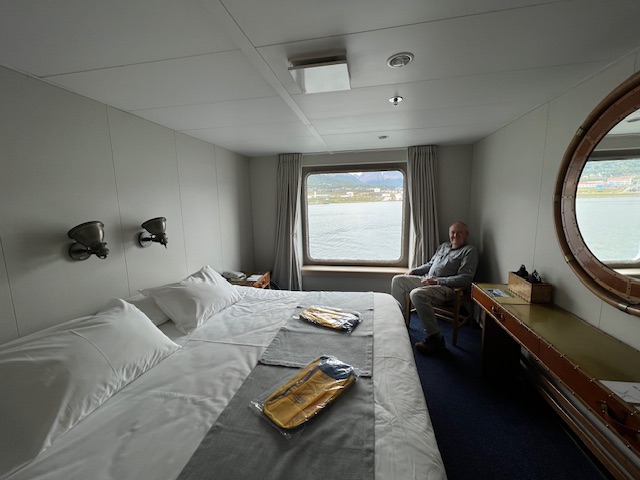
There is no time to change or luxuriate though. Welcome drinks are at 19.00 followed directly by dinner. We meet in the Darwin Lounge which is a wonderful space with floor to ceiling windows, which are perfect for viewing the spectacular scenery passing by.



We are allocated our table which we shall keep for the entire cruise. You never know who you will be seated with but we are lucky. We have a photo journalist from Germany and a Swiss couple form Zurich. They are interesting and good company. The cruise is on an all-inclusive basis with every need catered for. The meal and accompanying wines are quite excellent as is the service.
Day 2
There is a queue at breakfast for the buffet which is less than ideal. We are still pretty full from last night so just grab some fruit, juice and pastries.
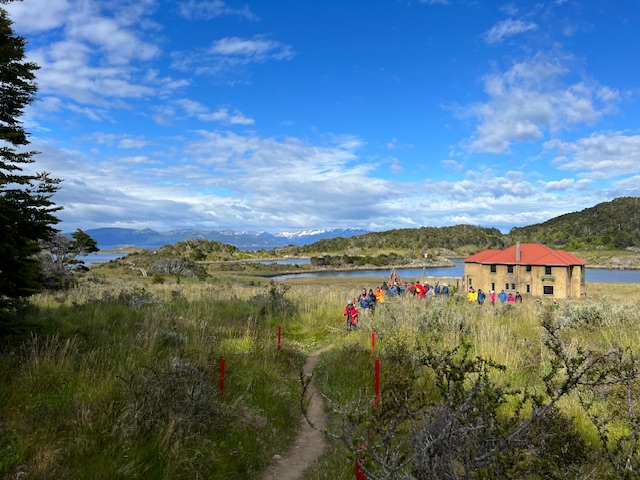
Our first excursion is to Wulaia Bay. There are three walks of varying intensity. I opt for the medium which has some very steep sections but will afford great views of the bay. We learn about the native people who lived here called the Yamahas or Yaghans.

They were the world’s southernmost people. They wore virtually no clothes and withstood the cold temperatures by covering their bodies in sea lion grease. They were hunter gatherers and lived in simple huts made from sticks and covered in skins and lichens.
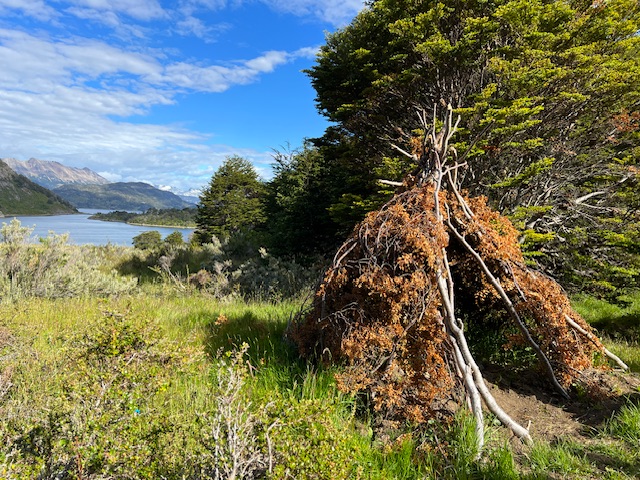
The walk turns out to be quite tough. Underfoot it is fine but there are quite steep sections. In hindsight using a walking pole would have been wise. Anyway I make it and arrive at the first lookout…and what a view.

We continue upwards and rest for a while at the second lookout. We admire the extensive views over the lake and to the snowy peaks behind. The experience is all the better for some really unexpected warm and sunny weather.
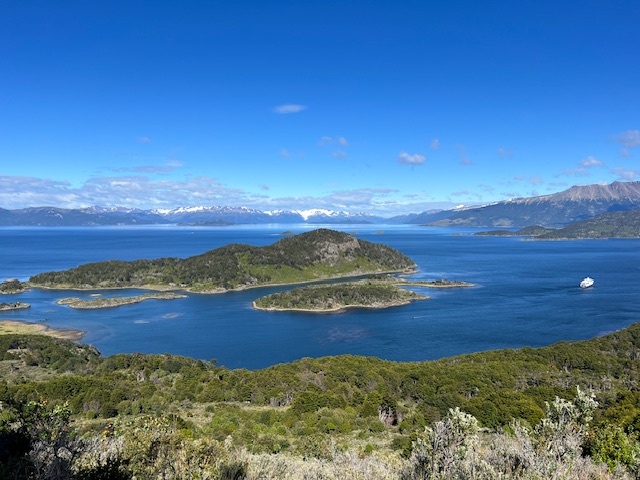
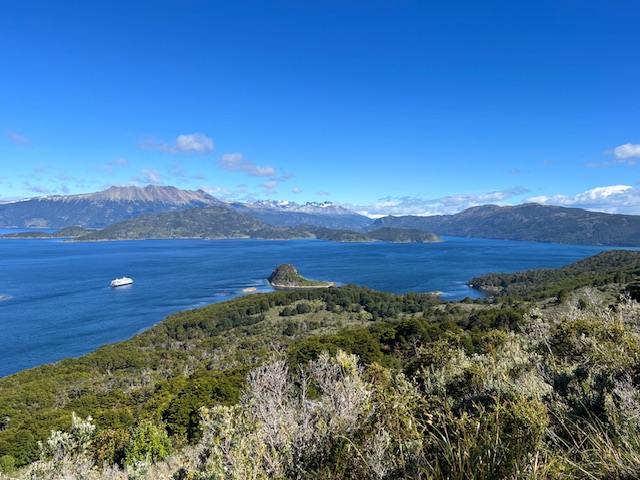
The descent is much easier. En route we encounter damage created by beavers which were brought here by settlers for their pelts. However the climate was not right to produce good quality skins and they were released into the wild. They do a fair bit of damage with no natural predators.

The boat is immediately under way for Cape Horn which is about a 6 hour passage from Wulaia Bay. The crossing is remarkably smooth. It is very rarely this benign at Cape Horn, so we are incredibly lucky. Our landing is made in a sheltered bay on the leeward side of the island.

The sea is dead flat here with just a small swell. Despite this it still requires two men to stand in the freezing water holding the zodiacs in place whilst we dis-embark. This is certainly a day for exercise as there is a steep climb up steps to the top of the island.

Paths then lead us to the lighthouse and small chapel.



In the opposite direction stands the Cape Horn Monument. This was inaugurated on 5 December 1992 in memory of seamen from every nation who perished in the seas around Cape Horn. It was created by Chilean Sculptor José Balcells Eyquem and is made of two separate pieces; each comprising 5 steel plates to represent an albatross. The specification required the monument to be able to withstand winds of 200km/hr.

There are two marble slabs on the way to the monument, one has a dedication and the other has a poem by Sara Vial…

which translates as:-
“I am the albatross that awaits you at the end of the earth.
I am the forgotten soul of the dead sailors,
who sailed around Cape Horn from all the seas of the world.
But they did not die in the furious waves.
Today they fly on my wings, towards eternity
In the last crevice of the Antarctic winds”

Day 3
This morning we land at Pia Glacier. It is raining lightly and the rocks are wet but we are assured not slippery. This is true, but as we make our way over rocks for a better view of the glacier, we do need to tread carefully. Where moss has taken a hold it is slippery. Indeed one lady does fall and needs to go back to the boat on a stretcher. Fortunately we heard later that she was OK.



Every so often the glacier groans and we hear what sounds like thunder as lumps of ice calve off and drop into the water. It is really quite something to experience. The ice formations and colours are incredible and photos do not do it justice.



There is some wonderful forest growing by the side of the glacier. It has a very Japanese garden feel, with some trees looking very much like overgrown bonsai.


As we head back to the boat the rain stops and the clouds begin to lift. By the time we leave for the afternoon’s excursion the sun is shining. We are visiting Porter Glacier which we shall view from the zodiac. When it first comes into view the only word that escapes our lips is “Wow!’ It is really something. The photos speak for themselves.





Back onboard it is pleasant on deck and the weather affords us some wonderful views. It would be usual to experience very strong winds here, which would make the cruise pretty uncomfortable to say the least. But so far, so good. Long may it last!



The evenings are long here and over dinner we are lucky enough to spot a whale spouting with a young calf alongside. There is also a rather wonderful sunset.
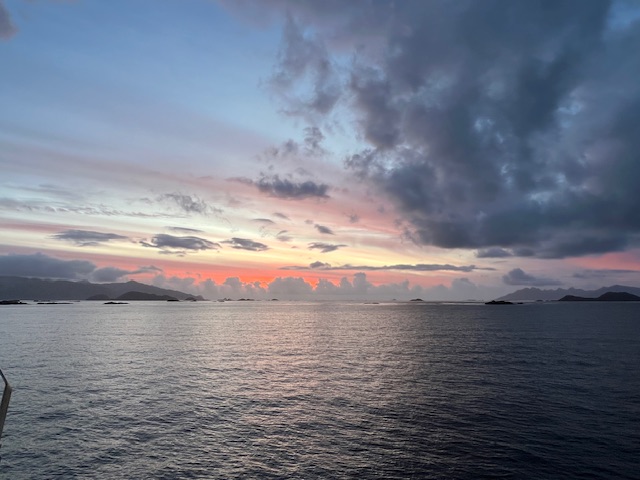
Day 4
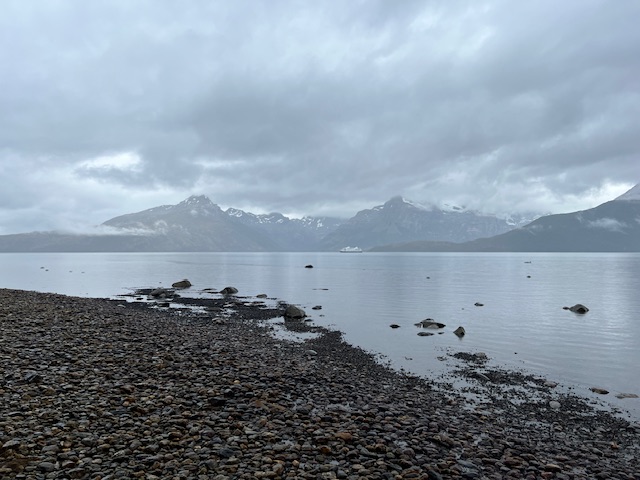
Today we are visiting Aguila Glacier, which is receding. We go ashore where we walk along the beach and are told about the sea-life and plants. Light rain is falling and it is 8C . There is no wind and I am wrapped up well with fully waterproof clothing so it is moderately comfortable. It is also rather pleasant to be walking on land that is flat. The light is poor and the view misty so landscapes are not that photogenic. Instead I concentrate on the small things. Pebbles on the beach and plants and flowers.




It a very enjoyable excursion. We make a short detour into the woods by the shore. This is sub-arctic rainforest, where lichens and mosses abound.

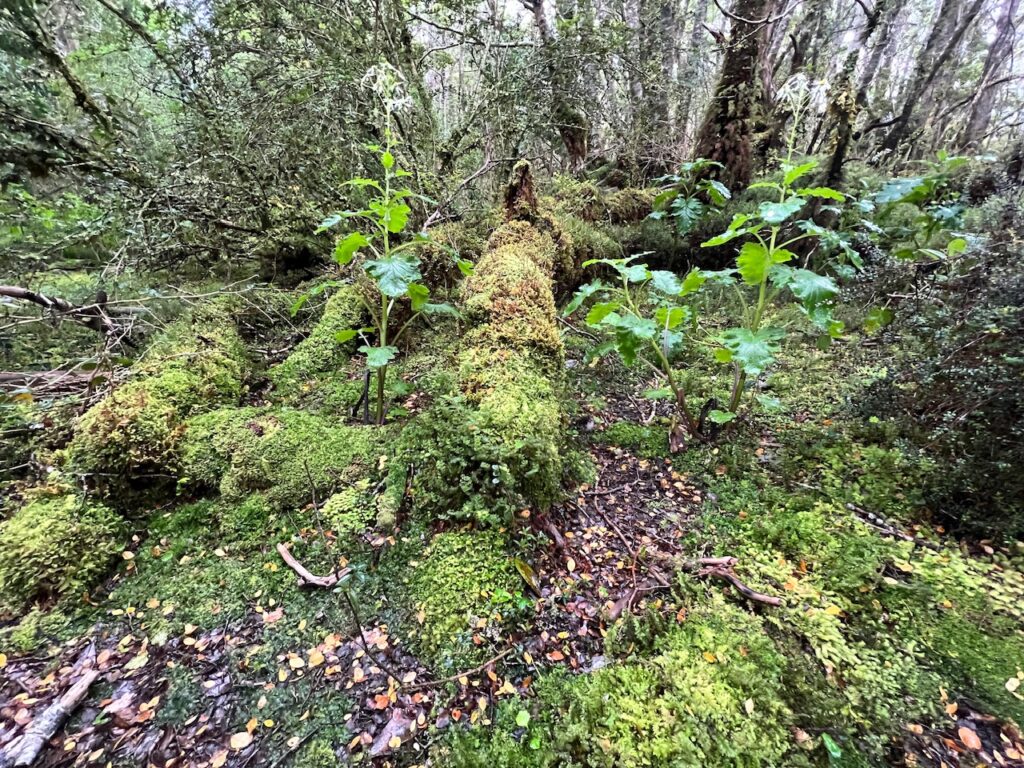
We then see the glacier, which is very different from the two that we saw yesterday. It no longer touches the sea. Water pours out beneath the ice, which has no contact with the warmer rock below, and cuts channels through the moraine deposits as it makes its way out to sea.



We set out immediately after lunch to see Condor Glacier, which will be viewed from the zodiac with no disembarkation. It is raining pretty heavily as we step into the zodiacs and many of the guests have opted out of this trip. In hindsight we should have done the same. It was cold and wet and the glacier was not particularly spectacular. There were some birds on the cliffs and I did try taking photos. However, I quickly became frustrated as I was at the back of the boat, had too many people blocking my view and by this time was quite cold and just wanted to be back on the boat.
The best thing at the end of each excursion is being handed a cup of hot chocolate with a generous slug of whiskey in it.
Tonight is our final night aboard. There will be the Captain’s Dinner and farewells to the staff who have looked after us royally.
Day 5
We are up at the crack of dawn for a 06.15 landing on Magdalena Island to see Magellan penguins. There is a very large colony here of about 150,000 birds. They come here to breed every year between October and March. We have to keep to the path but penguins are everywhere so it is easy to get close. Gulls and skuas abound too and do not seem in the least fazed by human presence. We see nest building with males burrowing in the mud and churning out soil. There are also chicks in various growth phases. One chick is especially fat!

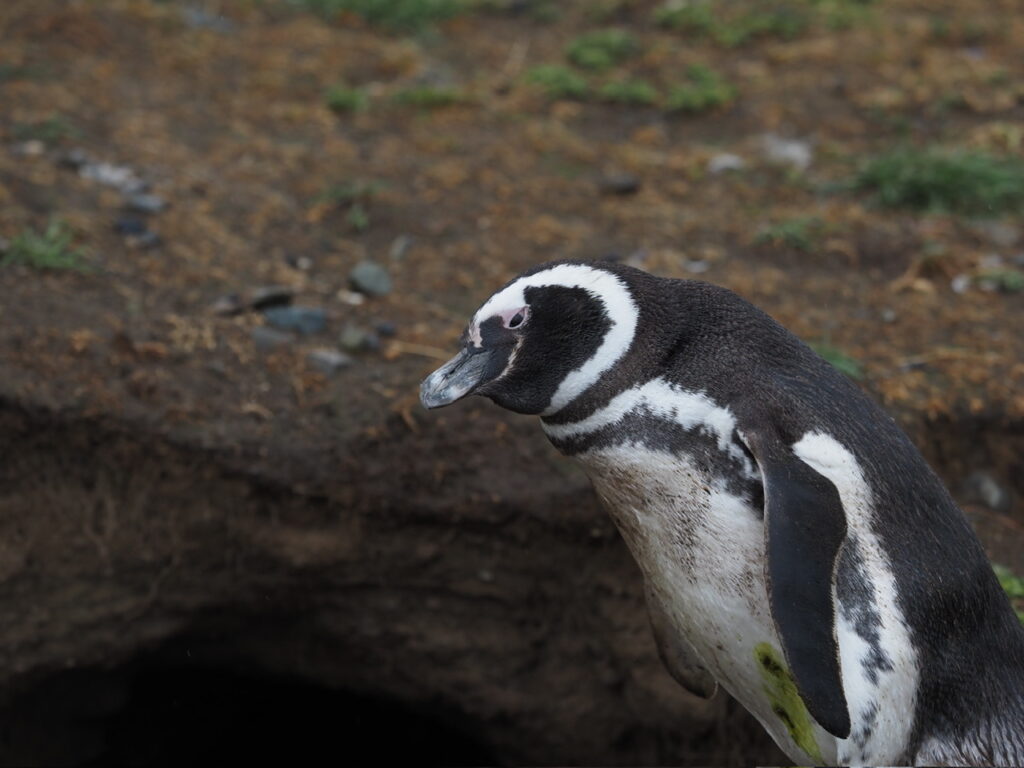

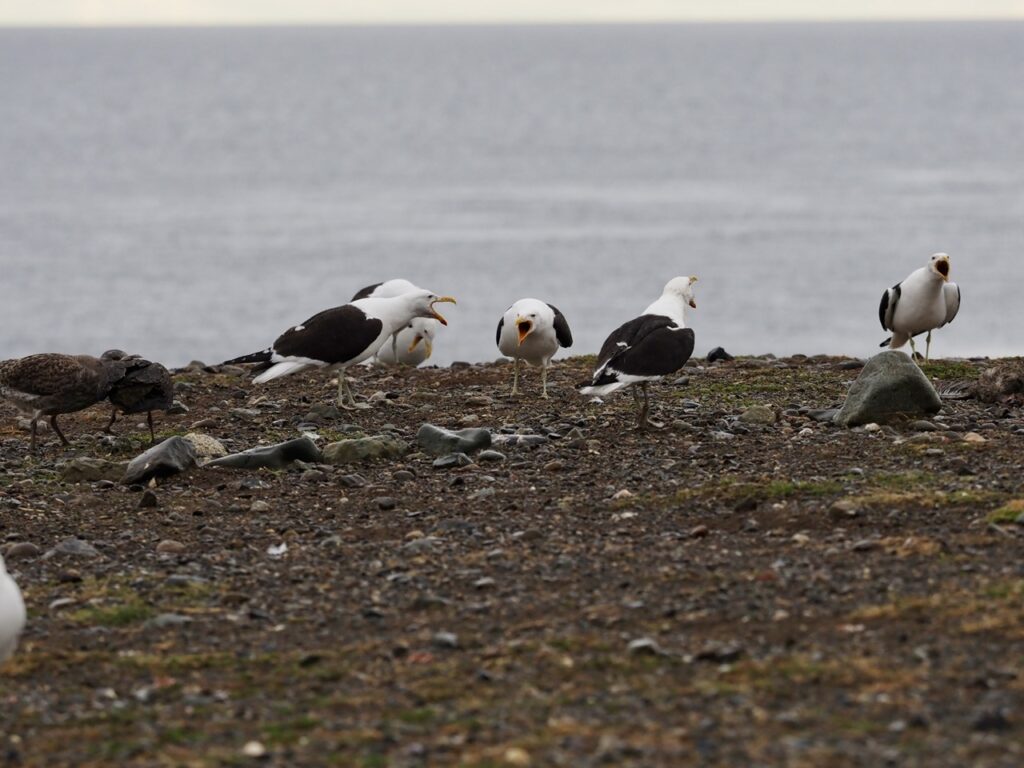


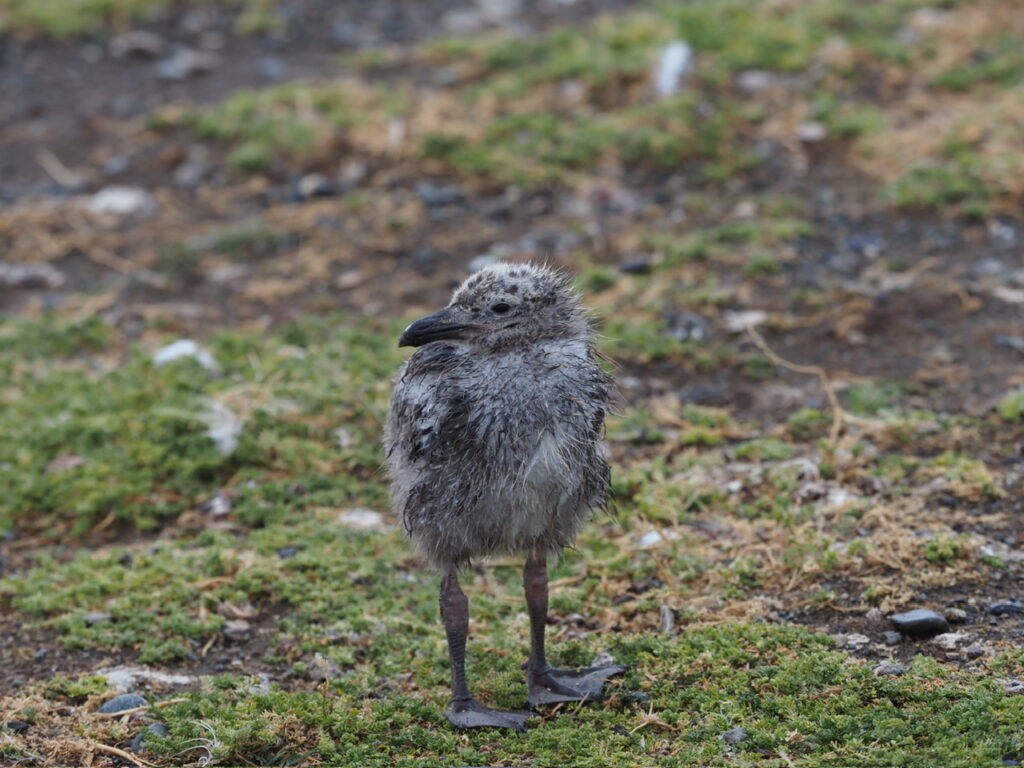
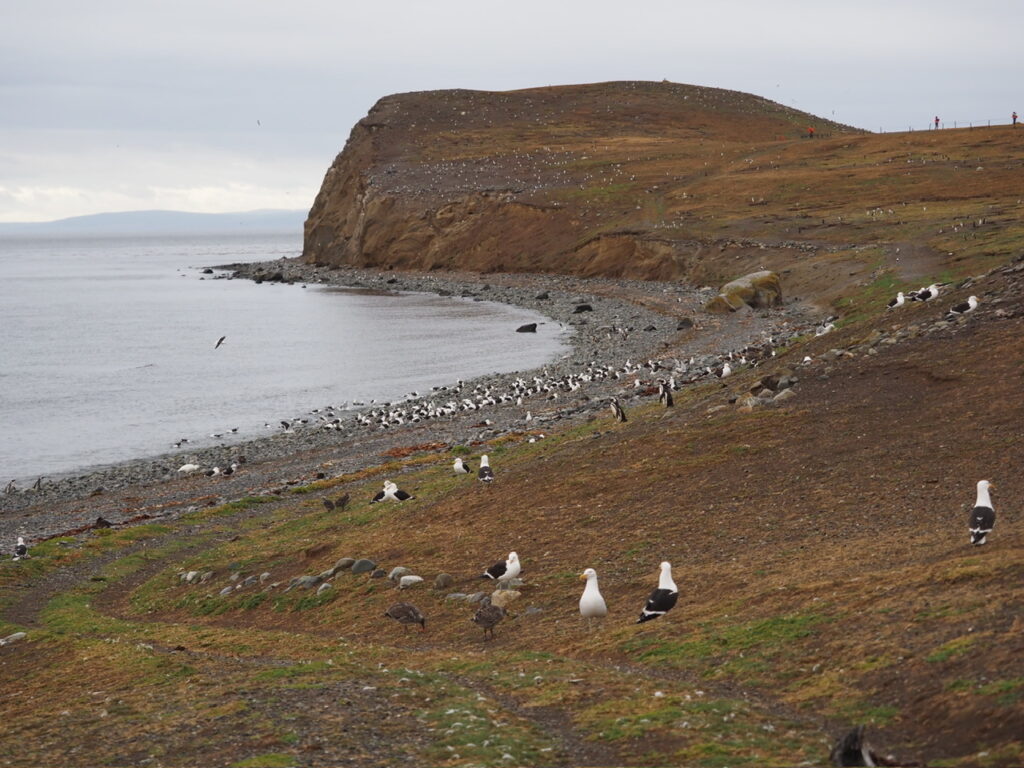

All to soon it is time to return to the boat, breakfast and pack cases as we depart for the short crossing to Punta Arenas – our final destination before we head north to Torres del Paine for puma tracking.

